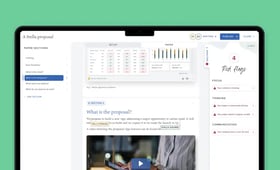This article is part of a series exploring critical thinking in business.
You don’t need to be a genius to ask a great question, the kind that can really change things.
The multibillion-dollar sports drink industry was born in the 1960s when Dewayne Douglas, a former American football player and the University of Florida Gators’ assistant coach, started wondering why his players weren’t urinating during games.
“Why aren’t players urinating more?”
~ Dewayne Douglas
Although it was hot and the players were sweating profusely, it seemed odd to him that they never needed to use the bathroom during their three-hour games. He asked a friend at the university, kidney specialist Robert Cade, and figured out that the sweating athletes were rapidly losing electrolytes as well as water, sending their kidneys into overdrive to conserve water and salt.
That could have been the end of it, an exercise in idle curiosity satisfied. But Cade realised that players not urinating during games was a problem, directly contributing to exhaustion, heat stroke, and in some cases hospitalisation. He also realised that drinking more wouldn’t help; water caused players to cramp while sugary drinks did nothing to replenish salts.
Most importantly, Cade realised that if he created an alternative that did replenish electrolytes as well as fluids, it would give the Gators an edge. This is of course exactly what he did. And the result, the sports drink Gatorade, now sells more than $6bn a year in the US alone.
Why isn’t information enough?
To surface insights like these — the sort that new products, processes, and industries can be built on — we need to do more than just find the time and space to think.
We need the stimulus and structure to think deeply, rigorously, and robustly when we get the chance. And to do that, we need to ask the questions that turn information into insight.
That’s because not all thinking is of equal value, and insight is far more valuable to decision makers than information.
Take board and management papers, for example. A lot of effort goes into them, but they’re often swollen with so much detail that they make it harder — not easier — for the decision makers reading them to see the wood for the trees. Nearly two-thirds (62%) of business leaders think the information they’re given is too operational, and less than half (48%) get value from their board and management papers, according to research conducted by Board Intelligence.
We need to go beyond just generating information and find ways of turning that information into insight.
Because insight is what drives effective action and unleashes our collective intelligence, the strategic capability that fuels enduringly successful businesses.
It’s the difference between realising why American football players weren’t urinating during games and working out why that mattered, how it could be fixed, and why it was worth fixing at all. It’s the difference between idle curiosity and game-changing innovation.
How do we charge our thinking with insight?
To convert information into insight, we have to ask two simple questions at every opportunity: “So what?”, and “Now what?”
“So what” focuses our thinking on our organisation’s priorities. What are the implications of the information we’re looking at? How material is it? Why does this matter to us? How does it affect our purpose, performance, strategy, and stakeholders?
“Now what” leads us to action, so we’re clear on what we need to do next or what others need from us (resources, ideas and so on) to take their thinking further.
These questions also prompt us to think more deeply, moving from descriptive observation to critical judgement. Investor Howard Marks describes it as the difference between “first-level thinking”, which addresses only an immediate problem, to “second-level thinking”, where people consider the wider consequences of a problem and the implications of any proposed solutions.
“First-level thinking is simplistic and superficial, and just about everyone can do it (a bad sign for anything involving an attempt at superiority). All the first-level thinker needs is an opinion about the future, as in ‘The outlook for the company is favourable, meaning the stock will go up.’ Second-level thinking is deep, complex and convoluted,” Marks writes in his book, The Most Important Thing.
Second-level thinking is essential in business, not least because the eventual consequences of decisions are often not immediately apparent, which can deceive us into short-termism. As another investor, Ray Dalio, put it, “People who overweigh the first-order consequences of their decisions and ignore the effects of second- and subsequent-order consequences rarely reach their goals. This is because first-order consequences often have opposite desirabilities from second-order consequences, resulting in big mistakes in decision-making.”
How do you make an entire organisation more insightful?
You can tell everyone to ask “So what?” and “Now what?” at every opportunity, and call them out when they don’t. You can role model the behaviour you want to see by injecting this question into your own thinking and grappling openly with these questions. But the only way to achieve insightful, second-level thinking at scale is to make asking “So what?” and “Now what?” a habit for everyone in your business.
Our AI-powered board and management reporting tool Report Writer is designed to do just that, by embedding questions into day-to-day activities like board and management reporting. Not only does this create more time and space for thinking, but by repurposing an activity that already dominates our schedules it also provides the stimulus and structure for management to think well.
Because when they prepare information to share with others — when they write a performance report, business case, project plan or strategy document, for example — Report Writer prompts management to consider the implications of what they are reporting, and what action, decision or support they are requesting as a result.
Report Writer builds each report around a framework of questions that’s based on our Question-Driven Insight methodology, and in which “So what?” and “Now what?” play a prominent role. And its AI-powered executive summary tool draws out the key messages in the report, so writers can work out if they’ve successfully articulated the valuable insight in their answers.
“The Board and I have found the new reports to be clear, well-balanced and of high quality, giving us the right level of information we need to shape our thinking and actions.”
~ Peter Hill CBE, Chair Keller Group plc — read the case study
By encouraging management to engage with these “So what?” and “Now what?” questions upfront, and then using AI to hold a mirror up to their thinking, Report Writer helps to make second-level thinking second nature. Management stop taking answers at face value, and instead start to probe further with their own follow-on questions, generating high-quality, actionable insights.
And because they’re now exercising judgement about what matters and what doesn’t, they’re much less likely to drown their audience in irrelevant information — something every decision maker will thank them for.
With Report Writer, you can go from blank page to ready-to-share paper in a blink, with the help of AI built on 20 years of report writing expertise.
See report writer


